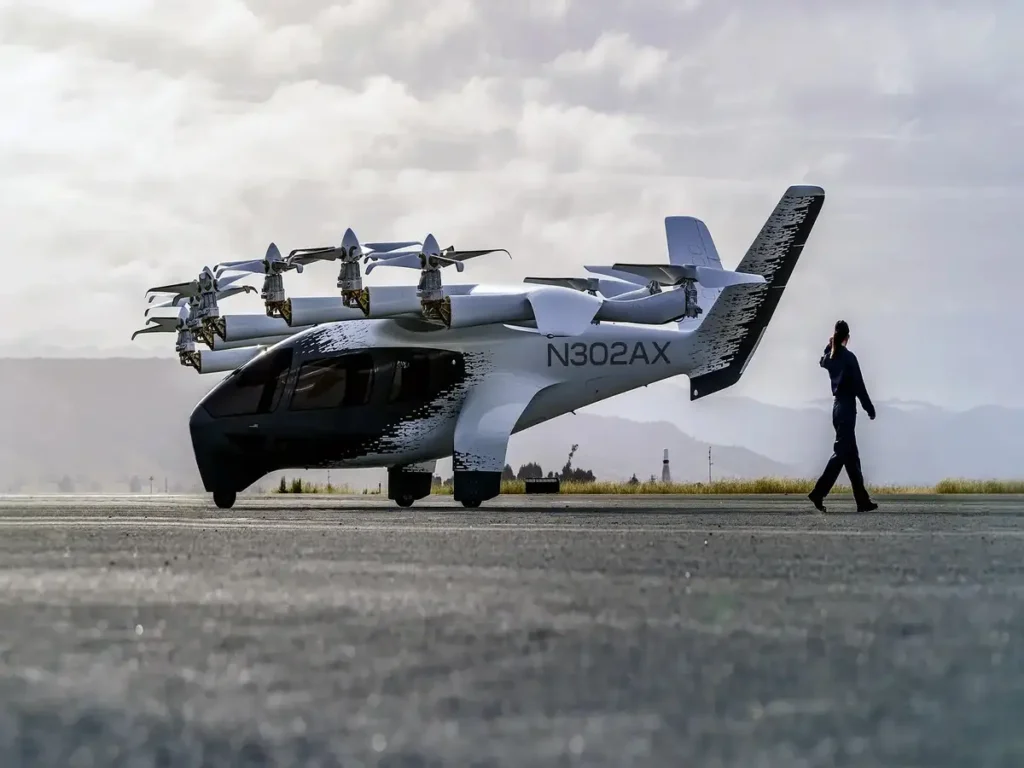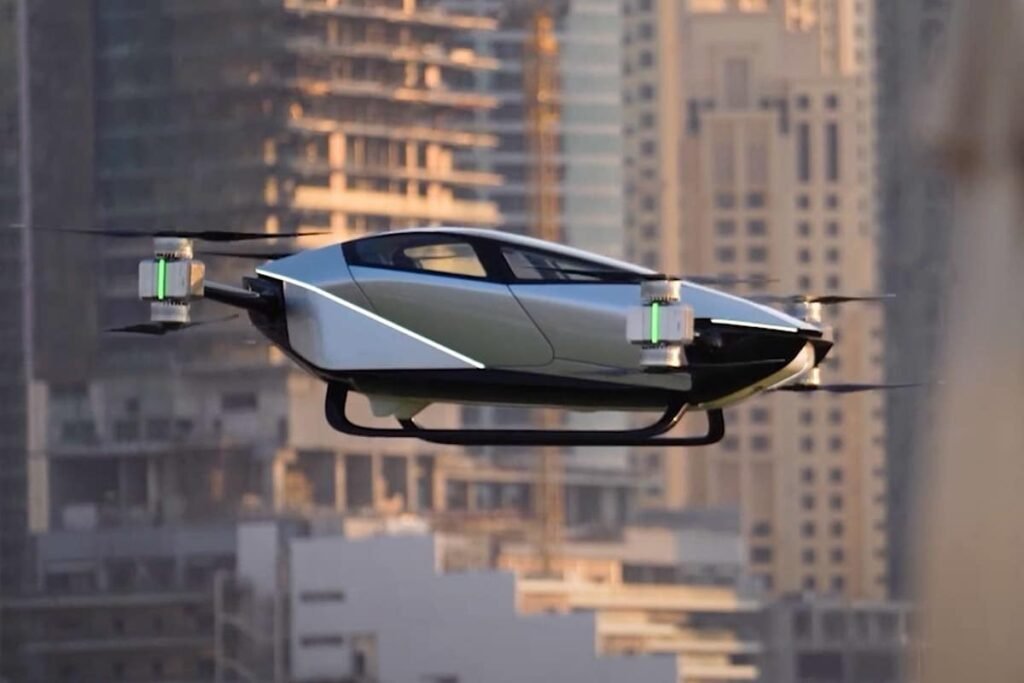Flying taxis in Oman are no longer a far-fetched idea. The country is now officially planning to develop flying taxi infrastructure, thanks to a new partnership between LYNEports and AeroVecto. These two innovative companies are coming together to build the ports and plan the routes for electric Vertical Take-Off and Landing (eVTOL) aircraft.
The partnership aims to reshape how people travel in and around Oman. With this agreement, Oman is joining other nations in preparing for an exciting new form of transportation — flying taxis that could reduce traffic, cut emissions, and offer faster travel.
Who are LYNEports and AeroVecto?
LYNEports is a company that specializes in designing and developing landing ports for eVTOL aircraft. Their goal is to create efficient, safe, and scalable vertiports — the airports of the future — that can handle a high number of take-offs and landings.

AeroVecto focuses on providing air mobility solutions. It works with various aviation stakeholders to bring together aircraft, technology, and operational systems needed for urban air mobility.
Together, they plan to transform Oman’s skies by introducing a sustainable and modern flying taxi system.

What is an eVTOL aircraft?
The term eVTOL stands for electric Vertical Take-Off and Landing. These aircraft are similar to helicopters but are powered by electricity and often operate more quietly and cleanly. Most eVTOLs are designed to carry two to six passengers and can be used for short trips across cities or between cities and suburbs.
Unlike traditional helicopters, eVTOLs are intended to be more accessible, affordable, and eco-friendly.
Where will the flying taxi ports be built?
While the exact locations have not been confirmed yet, LYNEports and AeroVecto are expected to begin their work in Oman’s busiest and most strategic locations. These could include:
- Muscat International Airport
- Salalah
- Duqm Economic Zone
- Tourist hotspots like Nizwa and Sur
The ports will be built in a way that they can easily integrate with existing transportation systems like buses, taxis, and even airports. The goal is to make travel easier and faster for both residents and tourists.
What benefits will flying taxis bring to Oman?
Introducing flying taxis in Oman could create several important advantages:
- Faster travel: Beat traffic and reach destinations quicker
- Eco-friendly transportation: Use electric power instead of fuel, reducing pollution
- Tourism boost: Offer a new and exciting way for visitors to explore Oman
- Job creation: New industries will open up for engineers, pilots, maintenance workers, and support staff
- Modern infrastructure: Oman will stand out as a regional leader in next-generation mobility
Are flying taxis safe?

Safety is a top concern when it comes to flying taxis. Both LYNEports and AeroVecto are following international aviation safety standards. The aircraft will be certified and tested thoroughly before being allowed to operate commercially.
In addition, the vertiports will include advanced air traffic control systems, emergency services, and backup power systems to ensure the highest level of safety.
What stage is the project at now?
Right now, LYNEports and AeroVecto are in the planning and design phase. They are conducting feasibility studies, surveying potential locations, and working with local authorities in Oman. Over the next few months, they will also map out the best routes for flying taxis and identify where infrastructure needs to be improved.
If all goes as planned, test flights could begin by late 2026 or early 2027, with full commercial operations expected soon after.
How will this affect the people of Oman?
For everyday people, this means shorter commutes and the chance to travel in a futuristic way. Imagine flying from Muscat to Sur in 30 minutes instead of 2–3 hours by car. This can save time for businesspeople, tourists, and even emergency services like ambulances.
It also reflects Oman’s desire to diversify its economy and invest in modern technology, especially in line with its Vision 2040 goals.
Will flying taxis be affordable?
At first, flying taxis may be considered a premium service. However, as more aircraft are produced and the technology becomes widespread, costs are expected to drop. LYNEports and AeroVecto have said that one of their long-term goals is to make flying taxis affordable for regular people, not just for luxury travelers.
They are also looking at ride-sharing models, where passengers can split the fare, just like using Uber or Careem.
What challenges lie ahead?
Like any major innovation, flying taxis in Oman will face some obstacles:
- Regulatory approvals: Aviation authorities will need to approve aircraft, routes, and operations
- Public trust: People need to feel safe and confident using a new type of transport
- Cost of infrastructure: Building vertiports and supporting systems is expensive
- Weather: Strong winds and desert dust storms could affect operations
But despite these challenges, the joint venture between LYNEports and AeroVecto shows that serious planning is underway.
How does Oman compare to other countries?

Oman is not alone in this vision. Countries like the UAE, Saudi Arabia, the US, and Germany are all investing in flying taxi technology. Dubai has already conducted flying taxi tests, and Saudi Arabia is exploring similar options for NEOM and other smart city projects.
By moving early, Oman positions itself as a pioneer in the region — not just a follower.
What’s next for the project?
The next few months will be critical. The two companies will:
- Finalize agreements with government bodies
- Identify top landing locations
- Begin designing smart, modular vertiports
- Start talks with eVTOL manufacturers
- Launch awareness campaigns to educate the public
Once these steps are complete, Oman could see the beginning of its flying taxi era within a few years.
Conclusion: A Sky-High Vision for Oman’s Future
The dream of flying taxis in Oman is starting to look like a real plan rather than just science fiction. Thanks to the partnership between LYNEports and AeroVecto, Oman is setting the foundation for a bold new era of mobility.
As technology develops and public transport evolves, flying taxis could soon become a part of daily life — changing how people think about distance, time, and travel in the Sultanate.
Read More: Qatar Investment Authority Acquires 49% Stake in Msheireb Properties














